“The earth laughs in flowers” – Ralph Waldo Emerson
What if I were to tell you that flowers have their own secret language? Would you believe me?
The Floriography dictionary which decodes the secret language of flowers was introduced in the victorian era when flowers were used to convey secret messages that the then mainstream culture would deem inappropriate. In the Floriography dictionary every flower has a meaning.
But why let a book tell you the meaning of each flower, when you know what to be true in your heart. The truth is, each flower speaks to us differently. Each flower conveys something special to us individually. And it is up to us individually to interpret the flowers secret message to us as we intuitively feel right. The language between a flower and the person it is speaking too is a magical relationship.
Whether it is a small garden pot of flowers, vase of fresh flowers, a wreath of dried flowers or a framed artwork of pressed flowers - adding more flowers into your day may just be the healing and relaxation you need.
Like all living things, flowers have a natural energy – or chi. The natural energy of flowers is positive, uplifting, loving and healing. Flowers speak in ways that touch the human heart; flowers have a language of their own. And the beauty of this is that we have the freedom to interpret their language however we individually choose.
The smell and beauty of flowers have a wonderful healing property. They reconnect us with ourselves, nature and everything around us, they gently remind us of the simple things in life. They turn the ordinary days and moments into the extra-ordinary. Having more flowers around in your home or on your office desk is a great way to bring more nature into your day.
In this busy world of ours, the mind is constantly pulled from pillar to post, scattering our thoughts and emotions and leaving us feeling stressed, highly-strung and at times quite anxious.
If you feel stressed, overwhelmed or unsettled, even short periods of meditation can seem overwhelming at first. Also, most of us don't have five minutes to sit down and relax, let alone 20 minutes or more for a meditation session.
However, bringing mindfulness and gratitude to everyday activities such as drinking a cup of tea, cleaning your teeth, or going for a walk is a gentle way to begin. It's also a great tool to help start and develop your practice.
Your well-being needs to take a few moments each day to cultivate mental space and create a positive mind-body balance.
Mindful exercises only take a few minutes and help to empty your mind so that you can find some much-needed calm amidst the busyness of your hectic day.
Today we are going to do a mindful exercise with a flower.
This exercise is simple but incredibly powerful because it helps you notice and appreciate seemingly simple elements of your environment more profoundly.
The exercise is designed to connect you with the beauty of the natural environment, something that is easily missed when we are rushing about our daily lives trying to complete that never-ending to-do list or hopping on and off trains on the way to work.
Mindful Appreciation For A Flower
In this exercise, we will take five mindful minutes to notice five things about a flower. For 3-5 minutes you are going to do nothing except notice the finer details, beauty and awe of the one flower you are looking at.
The purpose of this mindful exercise is to give thanks and appreciate the things that we don't notice daily because of our busy pace of life.
Use a notepad or our free secret language of flowers nature journal to write down your five observations.
To get started all you need is a flower. Treat yourself to a bunch of flowers, pick a flower from a garden or why not direct your attention to the humble yellow dandelion growing in the grass.
1. Look at the flower as if you are seeing it for the first time. Visually explore every aspect of its formation, and allow yourself to be consumed by its presence.
Notice the size of the petals, the colour, the different shades of colour throughout the flower, the small intricate details. Notice how you feel whilst you are observing.
Allow yourself to connect with its energy and its purpose within the natural world.
2. Take some time to touch the flower. Feel the petals. Notice how they feel. Notice the sensations on your skin. What is the texture like?
3. Bring the flower close to your nose. Smell the flower and take in all the scents. Does it have any smell? Maybe it has, perhaps it does not. Does the scent change? Maybe, it brings up a memory. How does that memory feel? Just observe, notice, and have no judgement.
4. Ask some important questions about the flower. Get to know the flower better.
Some observation journaling prompts to help you get started:
- Give some thought to how the flower came into existence?
- What is needed to make it bloom? e.g. sunshine, rain, good soil, pollination from the bees etc.
- How does this flower impact your world or the world we live in? e.g. the pleasure it gives by its look and smell, food for bees and butterflies, the ability to brighten somebody else's day etc.
- Think about what life might be like without flowers?
- Look closely at the flower and notice its more delicate, more intricate details?
- Give some thought about the relationship between the flower and the world it grows in. How does it play an interconnected role in the functioning of the earth?
Take some time writing down five things that you observed or felt throughout this exercise.
Once you have identified five things, make it your duty to find out everything you can about the flower, its botanical name, history, meaning, ideal growing climate, the colours it grows in.
Nature gives us all that we need to experience joy, peace, stillness in the present moment. The big question is, do we allow nature to do its job? Are we too busy to stop and notice the powerful effect nature can have on our entire well-being? Or are we too distracted and overwhelmed to let nature in?
Get in the habit of stopping and smelling the flowers more, looking deeper into their creation and purpose so that you can truly appreciate how they support your life and the entire world we live in. Happiness, joy and contentment is found in the little details of life. Sometimes you just need to pause, breathe and become present in order to see them.
Want a fun activity to do with the kids on the weekend. Why not make some Gratitude Flowers. Download free activity sheet here >>>


